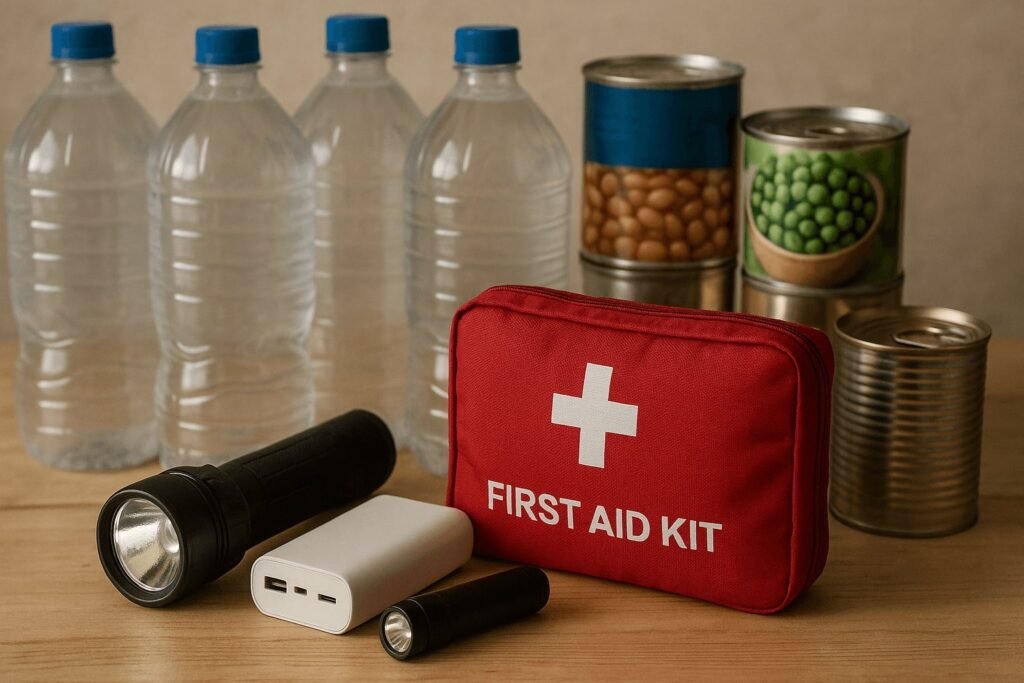When it comes to hurricanes, cyclones, or severe storms, there’s one truth every emergency planner agrees on: Don’t wait for the first warning to get ready. By the time an official alert hits your phone, store shelves are empty, traffic jams block the roads, and the scramble for supplies becomes real chaos.
In this beginner-friendly guide, you’ll find the five most important hurricane supplies you need before the first warning—plus the real search phrases people use when planning for storm season. Our list is clear, evidence-backed, and quick to act on, so you’re not left googling “storm preparedness kit” at the last minute.
Why You Should Never Wait for the First Warning
First Warning is your window to act, not your cue to start. Experts from NOAA, Red Cross, and emergency managers stress that those who prepare early have the best shot at staying safe and calm.
The Top Five Supplies to Buy Before a Hurricane or Storm Warning
1. Drinking Water: Don’t Leave It to Luck
Stock at least one gallon per person per day for three days. Don’t count on bottled water being available after the first warning. Store in food-grade containers or grab pre-filled jugs. If you want to go the extra mile, pack water purification tablets or a portable filter in your kit.
2. Non-Perishable Food: Think Simple, Not Gourmet
Pick foods you can eat cold: canned beans, peanut butter, protein bars, and dried fruits. Three days’ worth for every family member is the gold standard. Remember a manual can opener—it’s the #1 forgotten item!
3. NOAA Weather Radio: Your Link to Real Updates
Phones die, power fails. A battery-powered or hand-crank NOAA radio gives you live weather alerts and official updates even if the internet goes out. Many new models have built-in phone chargers. Keep spare batteries handy.
4. Light and Power: Don’t Get Left in the Dark
Buy a bright LED flashlight for each person—headlamps are great for hands-free tasks. Add a portable power bank (10,000 mAh or higher) for recharging your phone when the power’s out. Stash extra batteries in a dry bag.
5. First-Aid Kit & Meds: For Real Emergencies, Not Just Cuts
A basic first-aid kit with bandages, antiseptic wipes, gauze, and pain relievers is a must. Pack at least a week’s supply of any prescription meds in a waterproof pouch, and bring copies of prescriptions and essential medical info.
Bonus: Other Things People Search For (That You Might Need Too)
It’s smart to add a power bank for hearing aids, a waterproof pouch for your ID, pet food, a multi-tool, and cash in small bills.
Stay Ahead of the Storm: Your Checklist
- Stock water and food today, not after the first warning.
- Test your flashlight and radio; replace batteries now.
- Update your first-aid kit and fill extra prescription meds.
- Keep your storm kit in a grab-and-go bag by the exit.
- Teach your family how to use the weather radio and where to find the kit.
Preparing before the first warning gives you time, flexibility, and peace of mind. The best hurricane supply list is one you check off before anyone else starts to panic.
Every year, people rush for supplies after the first warning and find empty shelves. You don’t have to be one of them. Follow these steps, check the boxes before the alert, and you’ll weather any storm with less stress and more confidence.


